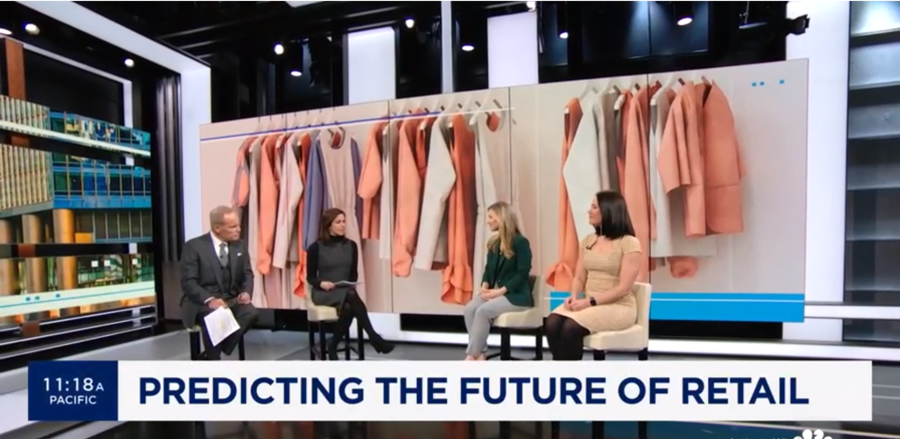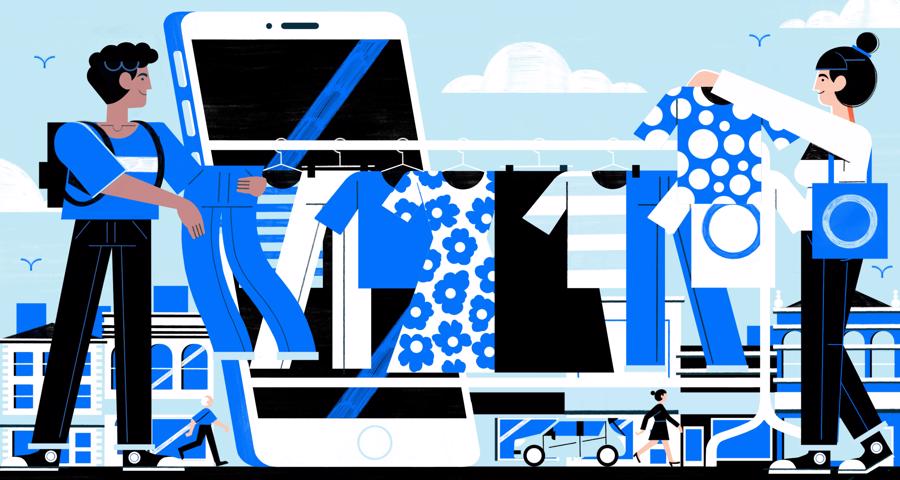Participating in the global business roundtable discussion in early 2024 were businesspeople such as Fran Horowitz, CEO of Abercrombie & Fitch, Michelle Gass, CEO of Levi Strauss, Marc Lore, the former CEO of Walmart’s e-commerce arm, Jens Grede, CEO of Skims, and Mickey Drexler, the former CEO of Gap Inc.
CNBC reports that they also surveyed dozens of CEOs and top executives from companies in order to help “determine” how global retail will operate in the near future. The consensus among most experts is that the industry will become more diverse, smaller, and more efficient, ensuring quick adaptation to new risks that may arise in the future.
PHYSICAL STORES MUST CHANGE
According to the Retail Insight Network, the Covid-19 pandemic has significantly changed the structure of global retail industries. Supply chains have been disrupted, leading to increased inventory; consumer demand and preferences have changed significantly in the context of prolonged inflation and increased cost of living. Following previous years, social media and AI-driven features will continue to dominate retail trends in 2024 and beyond.
This does not mean that traditional retail will lose its appeal. Around the world in recent months, many brands that already have stores in prime locations continue to plan for expansion into more premium spaces or tourist destinations. Some are shifting from bustling shopping streets to affluent suburbs. It can be said that tourism is reviving and at the same time “revitalizing” traditional retail stores, as spending from tourists at traditional retail stores accounts for the majority.

The recent comeback of physical stores has been noted among predominantly online brands. After building their customer communities for a while, these brands are gradually focusing more on experiences and creating customer bonds through physical stores. For example, Amazon, the “giant” of online shopping, has opened over 100 physical stores worldwide and is still deploying their expansion strategy. These beautifully designed stores with personalized services, café areas, event halls, create destinations for customers to come and interact directly with the brand, rather than just for shopping.
However, at the CNBC roundtable, Fran Horowitz, CEO of Abercrombie & Fitch, believed that large and massive stores are becoming less efficient. Covid-19 has accelerated the growth of online retail, and now with the support of technology, many stores are focusing on developing online retail with a reasonable location, rather than making large investments accompanied by huge operating costs and staffing.
Similarly, Michelle Gass, CEO of Levi Strauss, believes that the role of stores needs to be more experiential. She said that consumers will raise their standards and they will expect that. Now that shopping and transactions are so easy with just a “click”, stores need to have a purpose, function, and provide a higher level experience. They need to be small distribution centers, not just product showcases and sales points, but also warehouses for efficient distribution, helping to save costs and speed up the delivery process.

ONLINE RETAIL GETS A BOOST
Marc Lore, the former CEO of Walmart’s e-commerce arm and the founder of Jet.com, believes that conversational commerce trends will develop in the near future. Therefore, the retail industry also needs to prepare for appropriate changes in the future. In the age of artificial intelligence technology – where people can use voice or text to chat with virtual assistants, the retail industry needs to focus on developing conversational commerce.
Mickey Drexler, former CEO of Gap and J.Crew, agrees with the above statement and believes that social media has a huge influence on retail operations. Therefore, selling on social media platforms such as Instagram, Facebook, and even TikTok will become extremely popular in the next 5 years. Businesses will use social media platforms to attract customers, drive sales, and nurture brand loyalty. Retailers need to familiarize themselves with this trend as more social commerce channels emerge, making it easier for businesses to connect with customers and reach them.
So, in summary, will online shopping or traditional retail win in the future? According to the opinions of these business leaders, online and offline transactions will coexist and complement each other. Spear CEO of Fig says, “I don’t think the future will be determined by just one form or the other, it has to be both. I believe with both digital and offline methods, the retail industry will grow stronger.”

Similarly, Jens Grede, CEO of Skims, affirms that shopping activities are still happening in stores, but the majority of intentions or purchasing decisions will start online. He emphasized that today’s young consumers already know what they want to buy when shopping in stores, so the transaction happens in the store, but the customer’s journey of researching information, evaluating quality, and choosing products begins with online shopping.
In 2024, consumers will use smart devices in their shopping journey. A study by Google shows that 56% of shoppers research items on their smartphone while they are inside the store. For brands, this means that introducing their products online is just as important as physically showcasing them in a store.
Therefore, according to these CEOs, customer service will be an important standard in the retail industry in the next 5 years. Clearly, with the rise of online sales and increasingly fierce competition in today’s markets, customer service will be one of the most important standards that will guide the success of retailers.





































